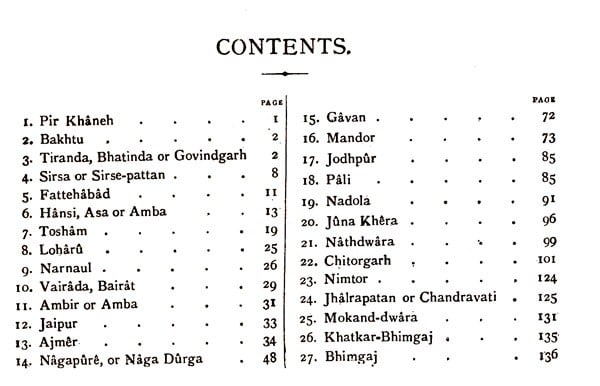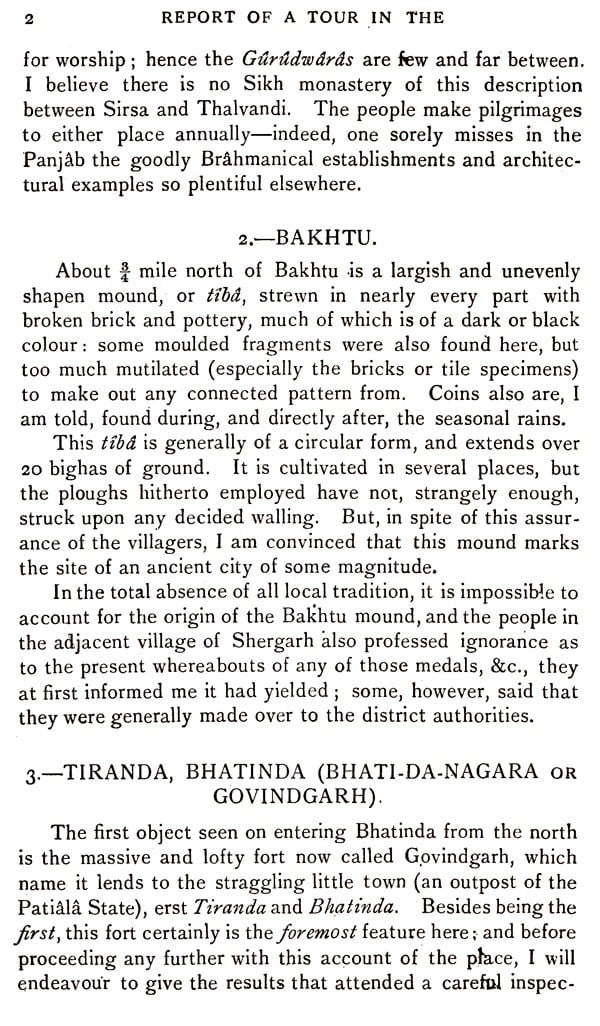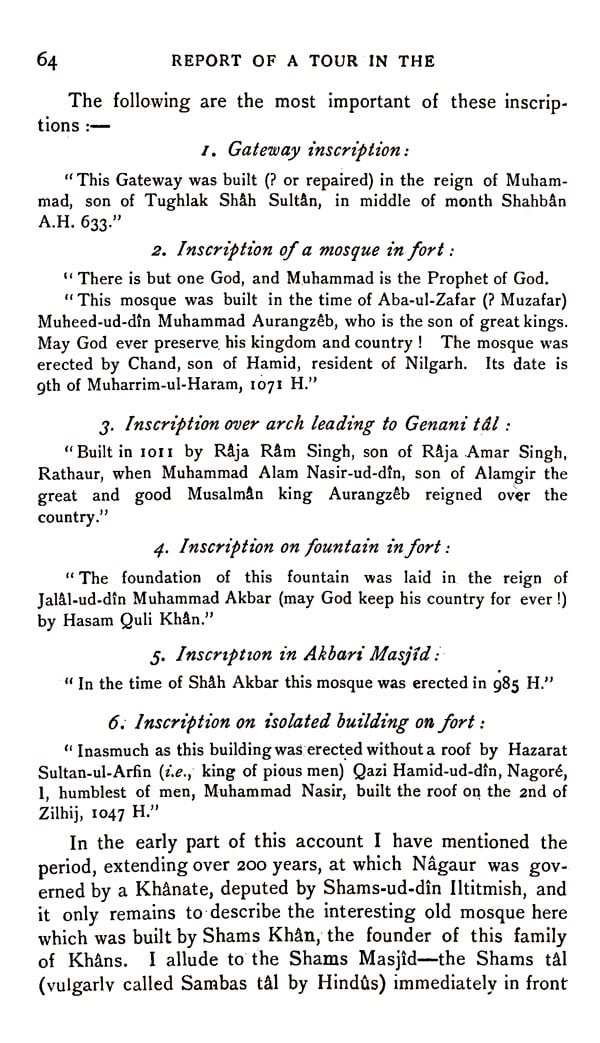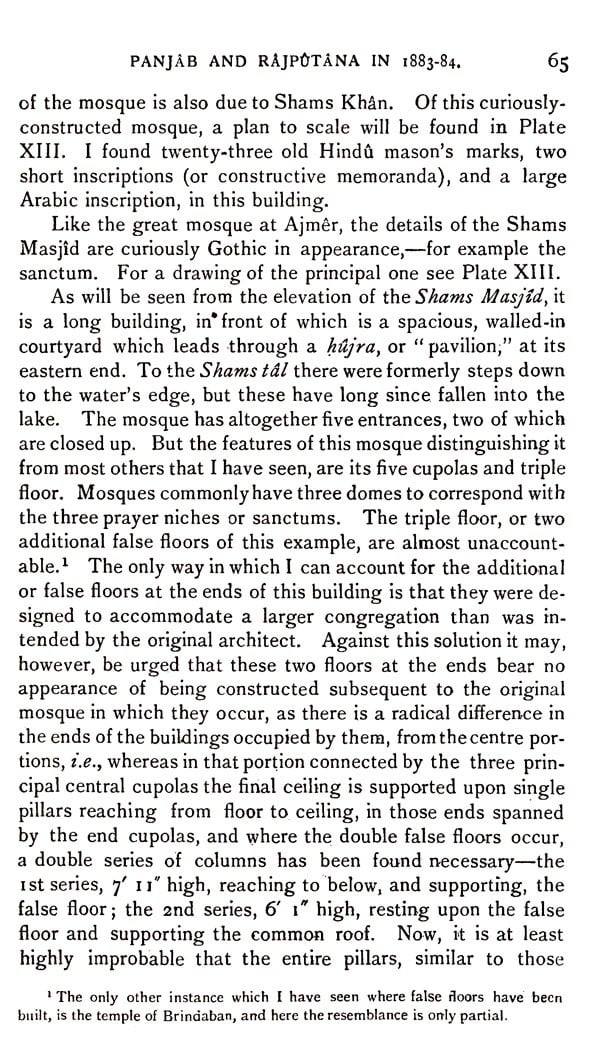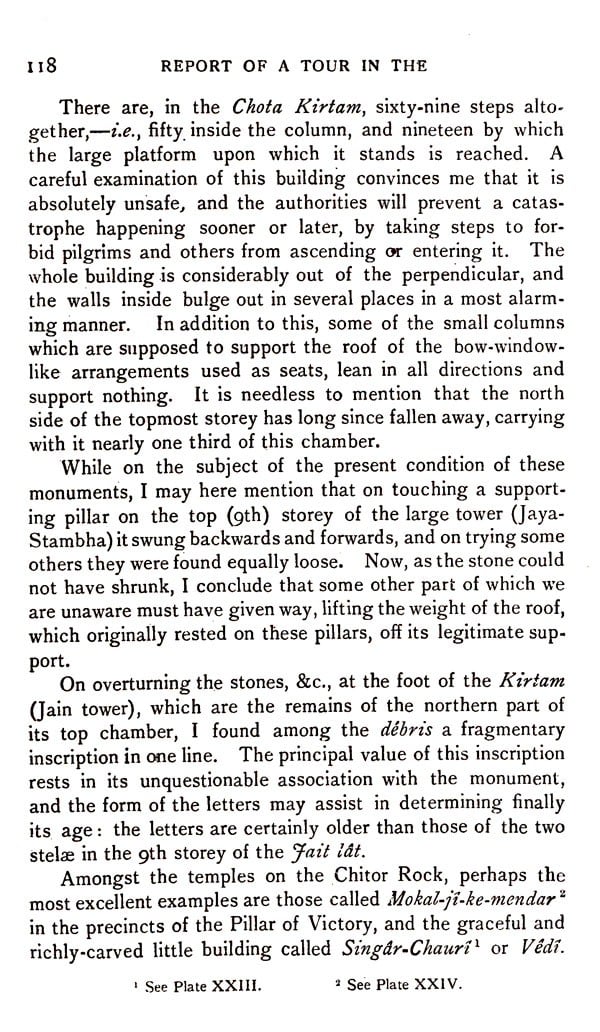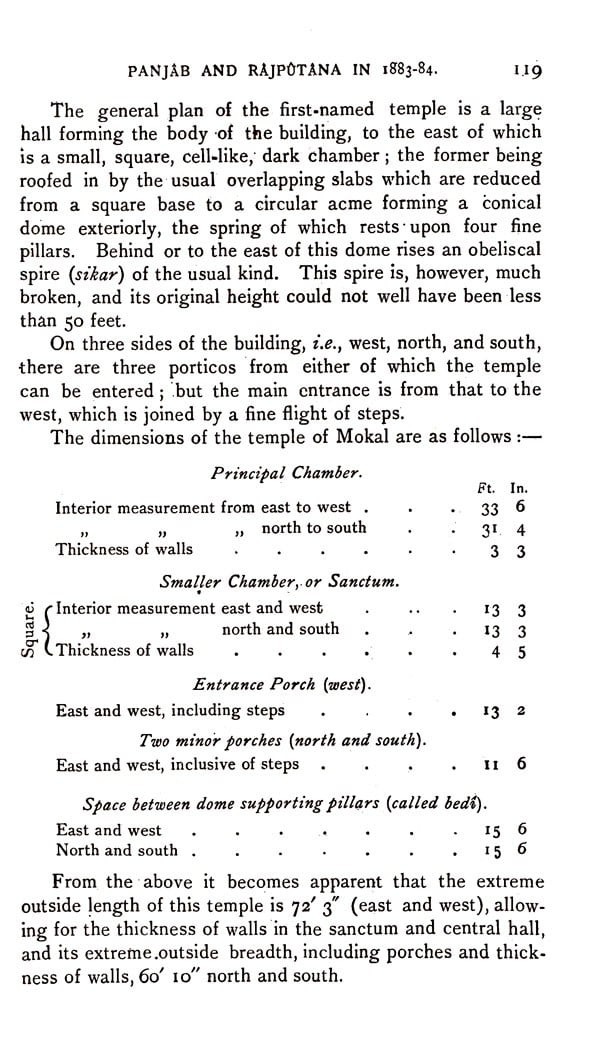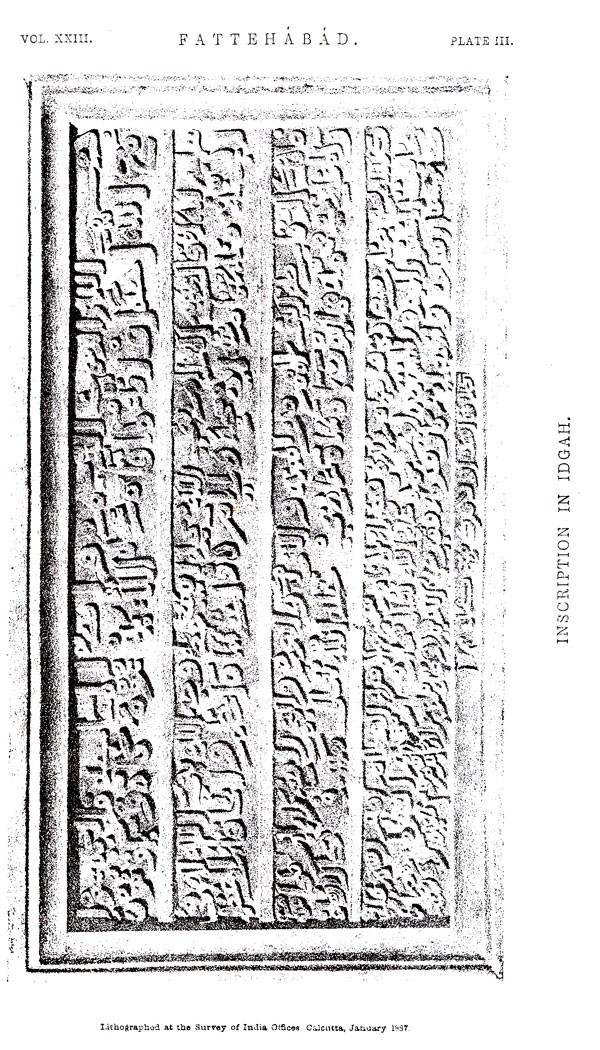
ASI Report of A Tour in The Panjab and Rajputana in 1883-84 (Volume XXIII)
Book Specification
| Item Code: | AZB518 |
| Author: | H. B. W. Garrick |
| Publisher: | Archaeological Survey of India |
| Language: | English |
| Edition: | 2000 |
| Pages: | 247 (Throughout B/W Illustrations) |
| Cover: | HARDCOVER |
| Other Details | 9.8 x 6.5 inches |
| Weight | 594 gm |
Book Description
DURING the past field season, my work laid for the most part in Eastern Rájpútána, and included some of the southern districts of the Panjáb.
Leaving Simla on the ist of October 1883, I examined the ancient forts at Bhatinda, Sirsár and Hánsi, together with the mosques and monolith of Firúz Shah Túghlak at Fattehábád. The next place of importance on this route is Túshám, celebrated for its rock-cut Gúpta inscriptions, of which I secured photographs. A quantity of inscribed data was also collected at the old sites of Hánsi, Bairát, &c.; it is to be regretted that the Asoka inscription at the latter place is almost entirely effaced, and does not lend itself to reproduction by mechanical means; I conclude, however, that it is merely a transcript of Asoka's edicts, of which so many copies are found incised on rocks and boulders in Northern India.
From Bairát my route passed through Amba and Jaipur (the old and new cities of the Kachhwahas) to Ajmir, after a short halt at which place I marched across the Indian desert to Nágor or Nágapúri, an ancient site in the Márwár State, hitherto unexplored ; and which contains, amongst other interesting objects, some fine temples. In this neighbourhood I came in contact with the desert tribe of Sahárias, who are said to be of Arabian extraction, and take their tribal name from the Desert of Sahára ; of this tribe, and likewise of the Sondhias, I prepared an ethnographical account in a separate paper.
I next visited Mandor and Jodhpúr, the old and new capitals of Márwár, peopled by the Rahathor refugees from Kanoj; and crossing the Aravali range of mountains at Komalmir, descended into Náthdwára, a very sacred site in the Meywár State, and proceeded thence to the Great Sisodia Fortress of Chitor, where I made photographs and impressions of various inscriptions, including those on the “Tower of Victory” (Jaya Stambha), which have been inaccurately translated by Tod.
The past year's tour extended southwards to Nimach, and terminated at Agra on the 31st of March 1884. Much difficult country has been traversed; twenty-nine old.sites explored, and twenty-eight drawings and photographs prepared within the limits above indicated.
**Contents and Sample Pages** **Contents and Sample Pages**
